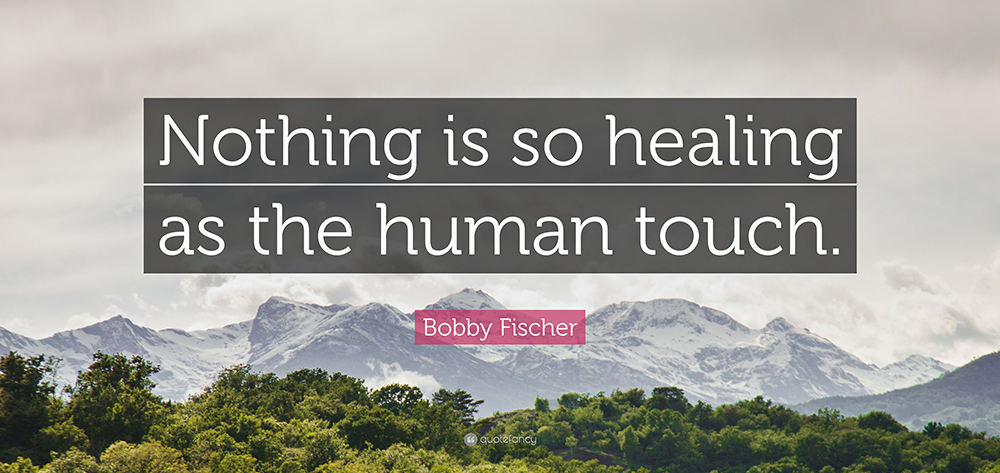Touch
 One of the peculiarities I love most of my profession, is the hands on skin we use to diagnose and treat people.
One of the peculiarities I love most of my profession, is the hands on skin we use to diagnose and treat people.
But what is touch? Is it powerful in healthcare? Let’s get into the topic and analyse some of the most important aspects that make TOUCH significantly effective.
Touch as a fundamental human need, from the beginning
Early research on monkeys that were deprived of actual physical comfort from their mothers gave us a tremendous amount of insight into why touch is so important.
Infant monkeys that had direct contact with their mothers grew up to be friendly, patient, social, happy, and physically healthier than baby monkeys who were provided with indirect sustenance such as bottled milk, but no direct physical affection and comfort from their mothers. The second set of babies who were denied physical touch and affection grew up to be isolated, lonely, depressed, withdrawn, unhappy, and in many cases highly aggressive.
Scientists have learned that the optimum speed of a human caress is 3cm to 5cm a second. Recently, researchers from University College London showed that slow, gentle stroking by a stranger reduced feelings of social exclusion.
What happens within our body when we are touched
Our sense of touch has vital functions for our psychological and physical well-being.
Being touched increases the number of natural killer cells, the front line of the immune system. Serotonin increases. That’s the body’s natural antidepressant. It enables deeper sleep.
We can describe the effects of manual therapy in 3 main areas:
-
Tissue effects, which are primarily local
-
Neurological effects (yes, the nervous system is tissue, but this relates to function of the nervous system)
-
Psychological effects

You can’t change tissues directly
One of the big misleading surrounding in manual therapy is that it directly changes tissues like muscles, ligaments and fascia.
This is not the case – and it doesn’t make biological sense for it to be.
Imagine, if a pair of hands touching you for a few minutes could stretch out your muscles. What would happen to your muscles as you sit down, or sleep?
Manual therapy can possibly influence some cellular responses via mechanotransduction.
Mechanotransduction is the physiological process where cells sense and respond to mechanical loads.
The most likely effect of manual therapy on pain seems to be facilitating “the drug cabinet in the brain” by descending modulation.
Descending modulation is an important biological process that is protective of us in times of threat, but also helpful in managing pain.
It is known that manual therapy, and even touch can cause the brain to release inhibitory neurotransmitters that modulate pain, most likely at the spinal cord level.
Psycho(social) Effects of Touch
When you are touching someone’s skin, you are actually touching their brain. – Diane Jacobs
Psychological effects have some crossover with neurological effects, and tend to evoke:
descending modulation, autonomic nervous system changes and pleasant feelings (positive affect)
And, bear in mind, not all touches are the same. In fact, our brain can exactly recognise a likely harmful, threatening touch from a loving and caring one. Amazing isn’t it?
In a research paper, The Skin As A Social Organ, the authors cite 3 mechanisms by which the skin can convey social meaning:
-
Through affiliative behaviour and communication
-
Via affective processing in skin-brain pathways
-
As a basis for inter-subjective representation


